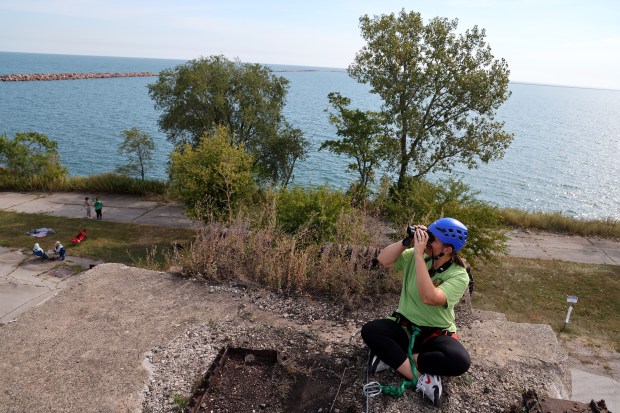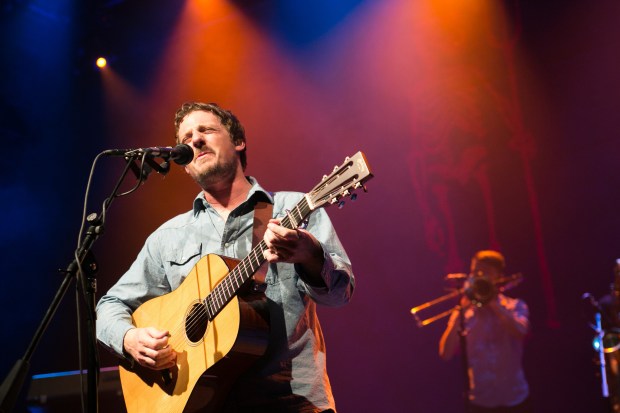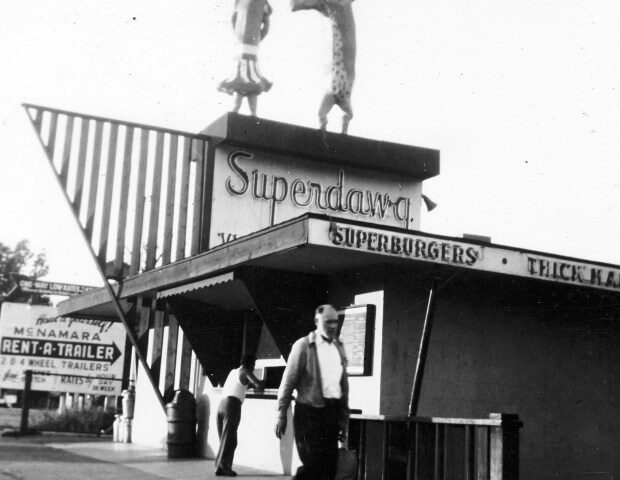My favorite park in the city is Sherman Park, extending south and west from the corner of Racine Avenue and 52nd Street. It is a beauty, filled with willows and wildlife, tall trees and flowing prairie grass, and more than a few birch trees.
Its central feature is a lagoon stocked with catfish each year but also containing bluegill, large-mouth bass, carp and other species. It surrounds a large island, with tennis courts and ball fields, accessible by four bridges. Named for James B. Sherman, a mostly forgotten fellow who lived from 1825 to 1902 and was once known as the “Father of the Stockyards.”
The park was designed by Frederick Law Olmsted, the landscaping genius most famous for his design of Central Park in New York and Jackson and Washington Parks in Chicago. Sherman had his son-in-law, that visionary planner-architect Daniel Burnham, design the Prairie-style field house at the park’s southern edge.
I’d like to assume most of you have a favorite park. We have enough to choose from, some 600 give or take, from those massive tracts named for former presidents — Lincoln, Grant, Washington, Jackson — to slivers of greenery, from A (Abbott Park near 95th and State streets) to Z (Zatterberg Park in the 4200 block of North Hermitage Avenue).
There is a new magazine all about parks, “Between the Leaves: Celebrating Chicago’s Parks,” brought to us at www.chicagoparksfoundation.org but also, handsomely, in print. There are only two issues so far but more promised.
It’s from the folks who run the Chicago Parks Foundation as a way of celebrating its 10th anniversary in 2023 as a partner with the Park District.
It is the idea of Willa Iglitzen Lang, executive director of the CPF, who has recruited some of the city’s best writers to give us stories about the AIDS Garden Chicago, Promontory Point, Steelworkers Park, and other spots and people, all strikingly embellished by photographs of such places as Palmisano Park.

The first issue has a story by former Sun-Times reporter and television producer Sharon Barrett, a profile of the charming and talented golfing Raoul family of the Jackson Park Golf Association.
“I was thrilled to be asked to write this article. Willa has a contagious way of getting people excited about the work she does. She loves the parks and sees this magazine as a way to remind people what an asset our parks are, and to reach into communities to hear from people committed to their neighborhood parks,” Barrett says. “For them, the parks have become a constant in their lives, a place for a picnic, a round of golf, a baseball game, or just a retreat where they can take a deep breath and enjoy nature.”
Connie Fairbanks did not know Lang until they bumped into one another in Union Park, on the Near West Side. “She was walking her dog and we just started talking,” Fairbanks says. Learning that Fairbanks was a historian, author and podcaster, Lang recruited her to write for the magazine.
In the second issue, Fairbanks writes about four of the more than 30 parks named after women, Linnian Armstrong (4433 S. St. Lawrence Ave.), the wife of jazz giant Louis; Mary Bartelme (115 S. Sangamon St.), a teacher and the first female judge in Illinois; Margaret Donahue (1230 W. School St.), a pioneering and longtime Chicago Cubs executive; and Lorraine Hansberry (5635 S. Indiana Ave.), the author of the play “A Raisin in the Sun.”
Another byline belongs to Susy Schultz, a former Sun-Times reporter and freelance editor and writer, who also chairs the Investigative Project on Race and Equity.
“When we look at parks we don’t realize the thousands of people who work there, who play there, people for whom the parks are an essential part of their lives,” Schultz says. “I have met so many interesting, actually fascinating and committed people.”
She has written six stories edited a few more and hopes her “Between the Leaves” relationship continues. So do I.
I have long known that every park has a story and unless the world goes completely crazy, they will remain and not vanish to make way for buildings or roads (the Obama Presidential Center an exception). They will be filled with activities or just offer a quiet place to sit and relax and provide thousands of stories to fill the pages of “Between the Leaves.”
rkogan@chicagotribune.com





